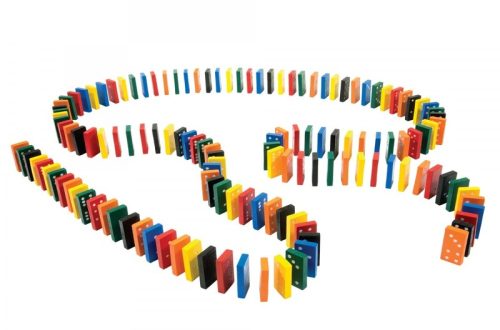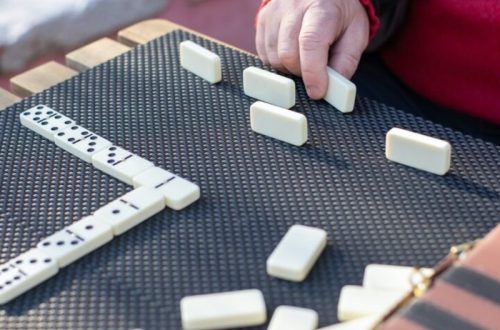Have you ever heard of a shoe that, once worn, seems to lose gravity, as if walking on the moon? Since its launch, Moon Shoes has attracted many children and young people. Everyone wants to try them on, and I’m sure you do too, to experience this amazing feeling for yourself.
With their unique spring-like soles, Moon Shoes offer a unique, resilient experience that seems to defy gravity. But what is the science behind these interesting shoes? The purpose of this article is to delve into the scientific principles and mechanics behind Moon Shoes, exploring the concepts of elasticity, energy transfer, biomechanics, and the materials used in their construction.
The Role of Gravity
To comprehend the science of Moon Shoes, it is crucial to first understand the role of gravity. Gravity is the force that attracts objects towards each other, and it is responsible for the weight we feel on Earth. On the moon, the force of gravity is approximately one-sixth that of Earth, making the lunar surface a low-gravity environment.
Energy Transfer and Elasticity
Moon Shoes rely on energy transfer and elasticity to simulate the low-gravity environment of the moon. When a person wearing Moon Shoes jumps or bounces, they apply force to the springs or elastic components within the shoes. This force compresses the springs, storing potential energy in them. As the springs decompress, the potential energy is converted into kinetic energy, propelling the wearer upward.
Newton’s Laws of Motion
Moon Shoes also adhere to Newton’s laws of motion, which form the foundation of classical mechanics. Newton’s first law states that an object at rest will remain at rest, and an object in motion will continue moving at a constant velocity unless acted upon by an external force. In the case of Moon Shoes, the external force is the wearer applying force to compress the springs, resulting in upward motion.
Newton’s second law relates force, mass, and acceleration, stating that the acceleration of an object is directly proportional to the net force acting on it and inversely proportional to its mass. In Moon Shoes, the acceleration is achieved by the compression and subsequent release of the springs, while the mass is the weight of the wearer.
Newton’s third law states that for every action, there is an equal and opposite reaction. When the springs in Moon Shoes decompress and push the wearer upward, an equal and opposite force is exerted on the ground, allowing the wearer to bounce.
Impact on Joint Forces and Muscles
Moon Shoes alter the forces acting on the joints and muscles of the wearer. When using Moon Shoes, the forces on the feet, ankles, and legs change due to the compression and release of the spring-like soles. This alteration in force distribution can affect muscle activation patterns and joint loading. Studies have shown that Moon Shoes can increase muscle activation in the lower extremities, particularly in the calves and quadriceps. Additionally, the altered forces can influence joint angles and potentially lead to changes in joint loading, affecting the biomechanics of the lower limbs.
Elastic Potential Energy
Elastic potential energy plays a crucial role in the functionality of Moon Shoes. When the springs within the shoes are compressed, they store potential energy. This potential energy is released as the springs decompress, converting into kinetic energy that propels the wearer upward. The elasticity of the springs allows them to absorb and release energy efficiently, contributing to the bouncy sensation experienced while wearing Moon Shoes.
Material Science
The materials used in Moon Shoes are carefully chosen to enhance their functionality. The plastic frame of Moon Shoes is lightweight yet sturdy, providing support and stability to the wearer. The springs or elastic components within the shoes are made from materials with high elasticity, allowing them to withstand repeated compression and decompression without losing their bounce.
Furthermore, the materials used in the soles of Moon Shoes are often designed to provide traction and grip on different surfaces. This ensures that wearers can move safely and enjoy the bouncy experience without slipping or losing control.
Safety Considerations
While Moon Shoes offer a unique and enjoyable experience, safety considerations must be taken into account. The design of Moon Shoes should prioritize stability and balance to prevent wearers from falling or losing control. Proper footwear should be worn, including secure straps and non-slip soles. Moon Shoes should be used on flat and stable surfaces, away from obstacles or hazards that may cause accidents. It is also important to use Moon Shoes within one’s physical capabilities and avoid excessive or reckless bouncing.
Future Innovations
As technology advances, there is potential for further innovations in the science behind Moon Shoes. Scientists and engineers may develop materials with even higher elasticity, allowing for more efficient energy transfer and enhanced bounce. Additionally, advancements in manufacturing techniques could result in lighter yet stronger materials for the frame of Moon Shoes, improving overall comfort and durability.
The science behind Moon Shoes is an intriguing combination of gravity, energy transfer, elasticity, and material science. By understanding the principles at play, we can appreciate the engineering and design behind these unique footwear devices. Moon Shoes provide wearers with a gravity-defying experience, simulating the sensation of walking on the moon’s surface. As science continues to evolve, we may see further advancements in Moon Shoes, enhancing their functionality and introducing new levels of excitement and bounce.




